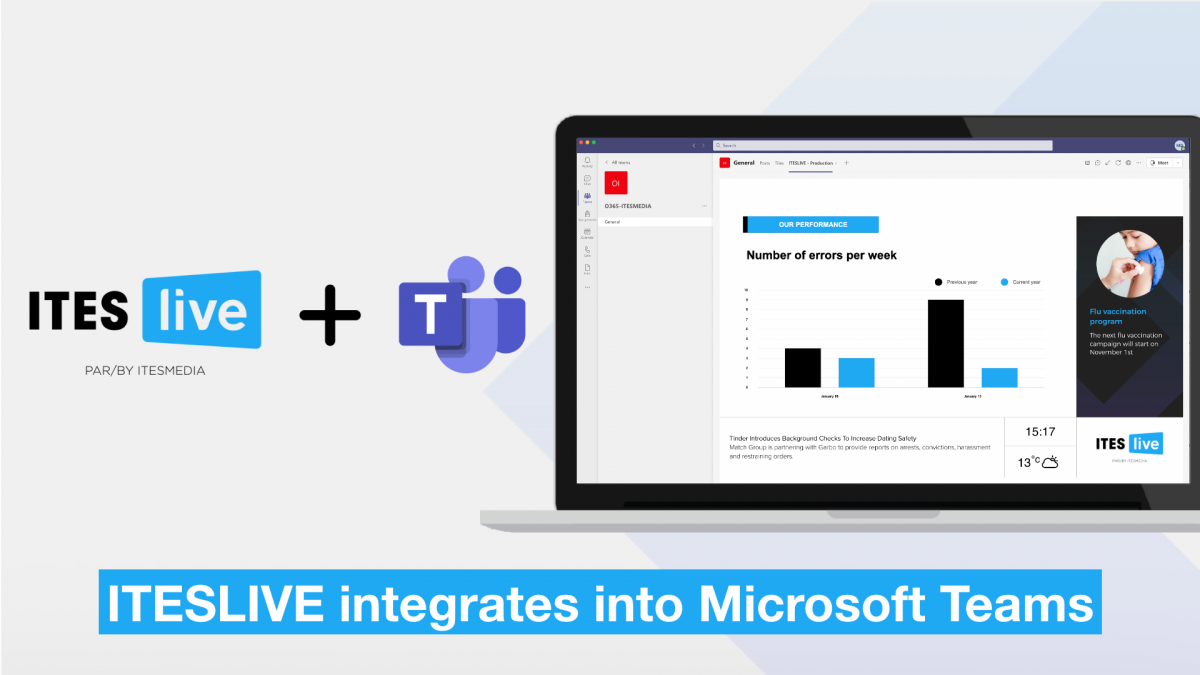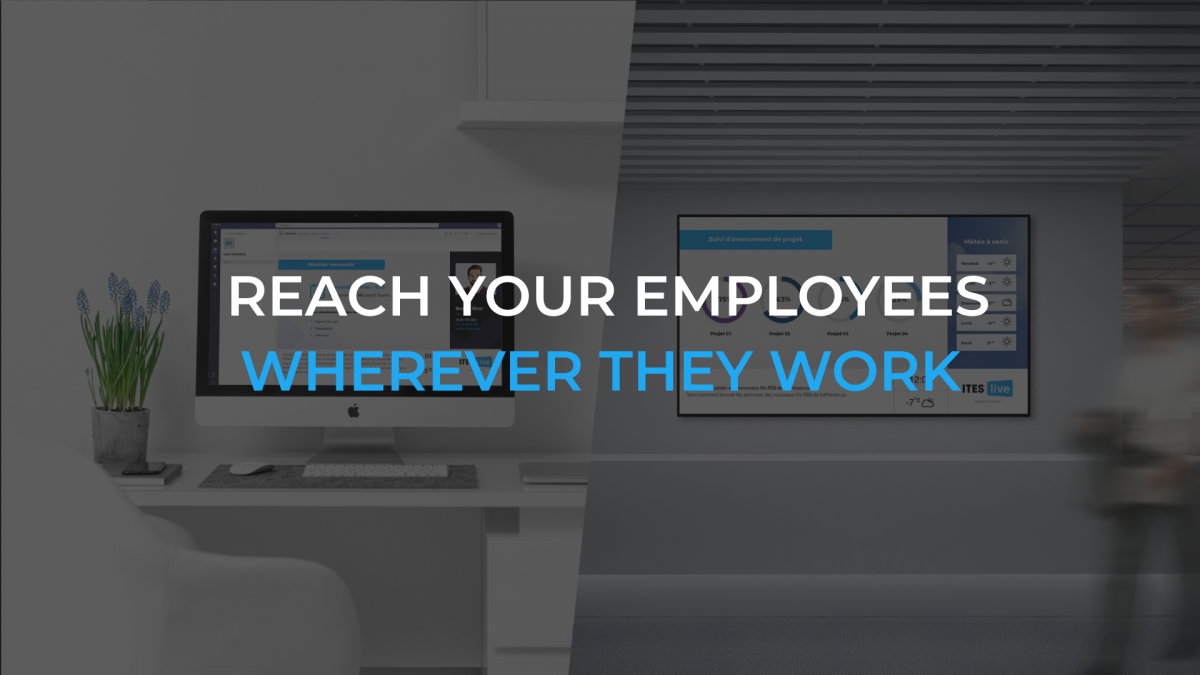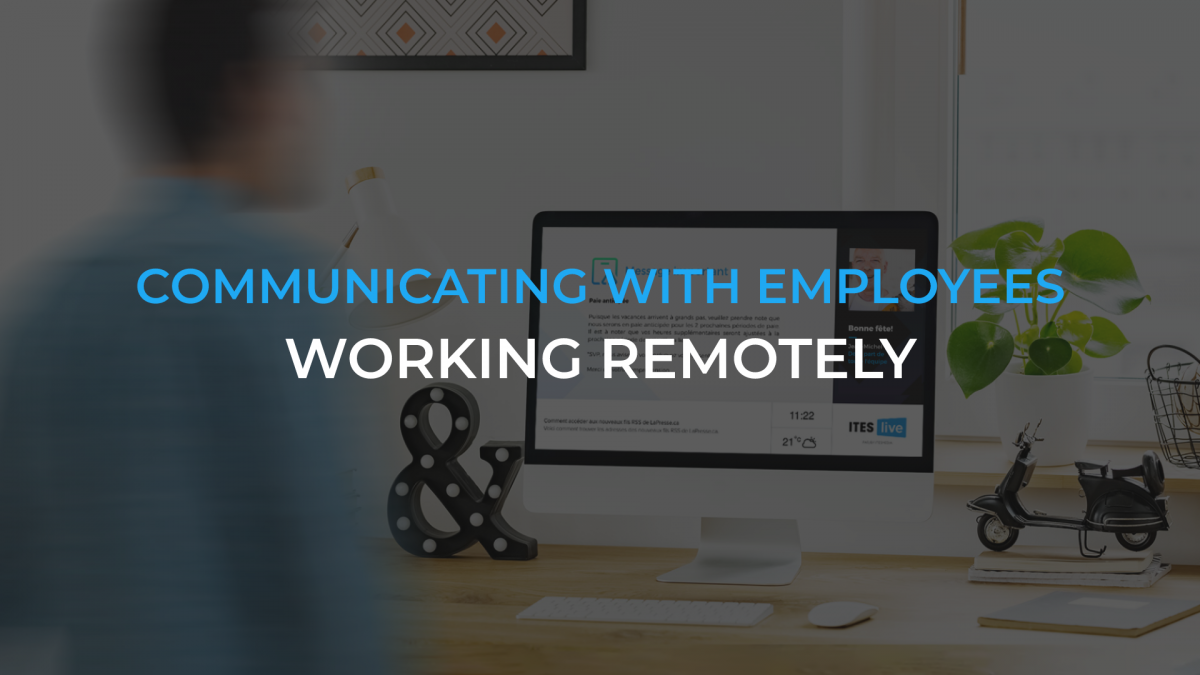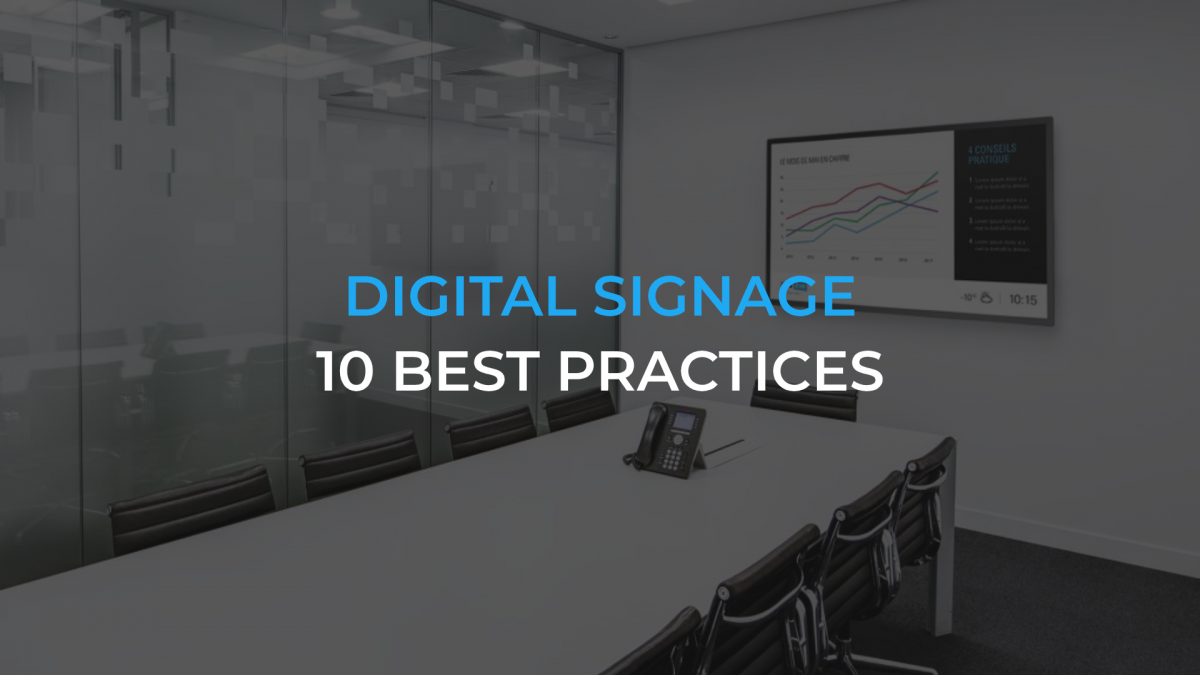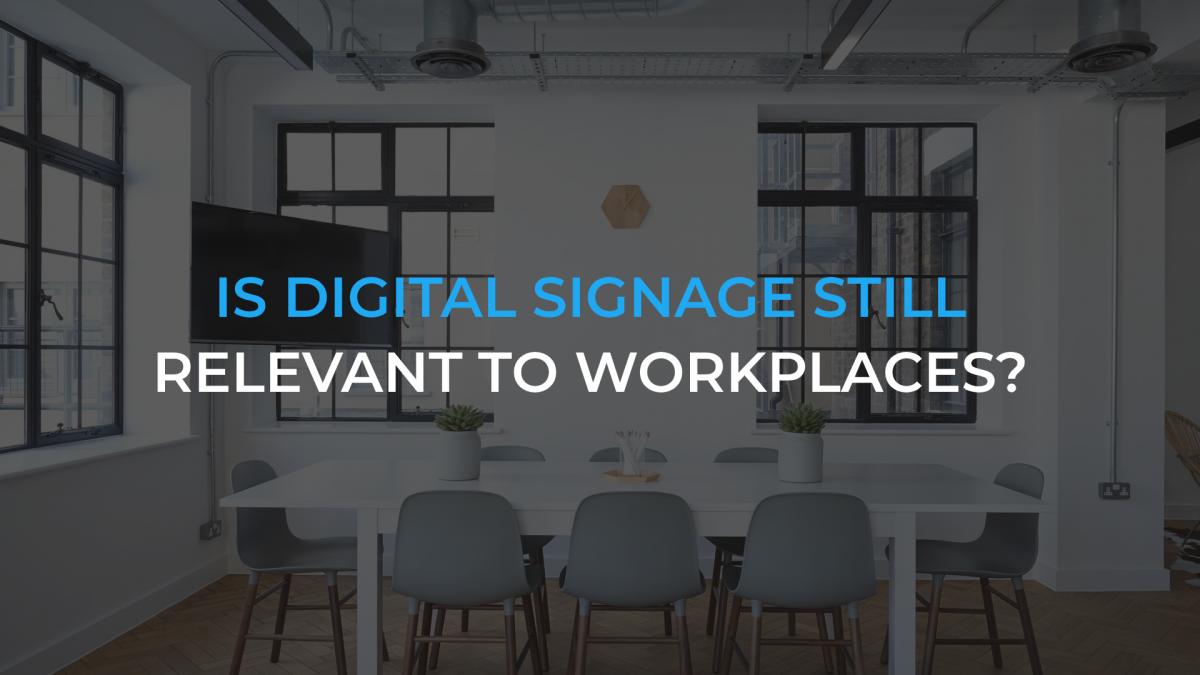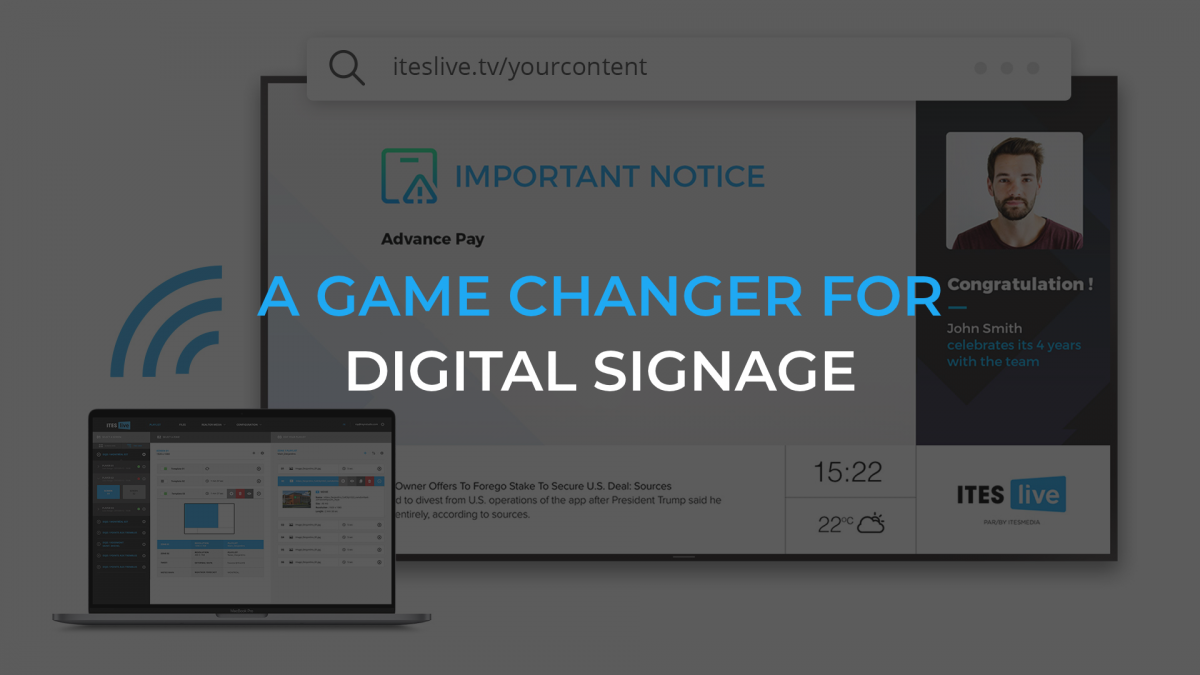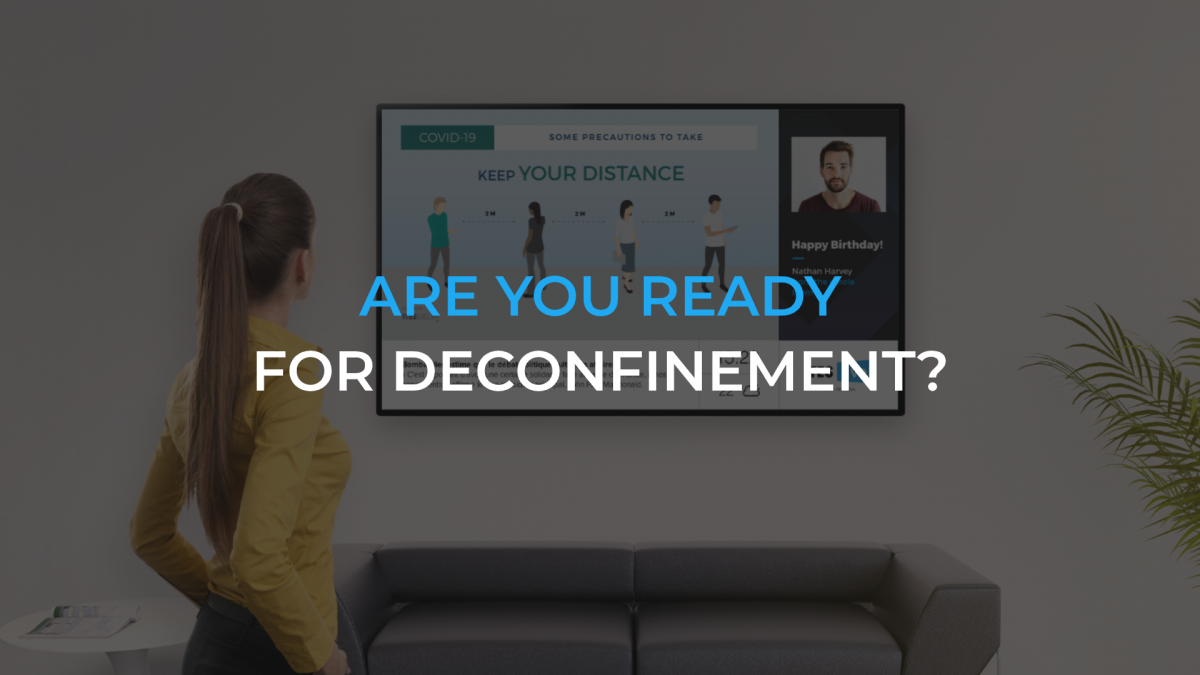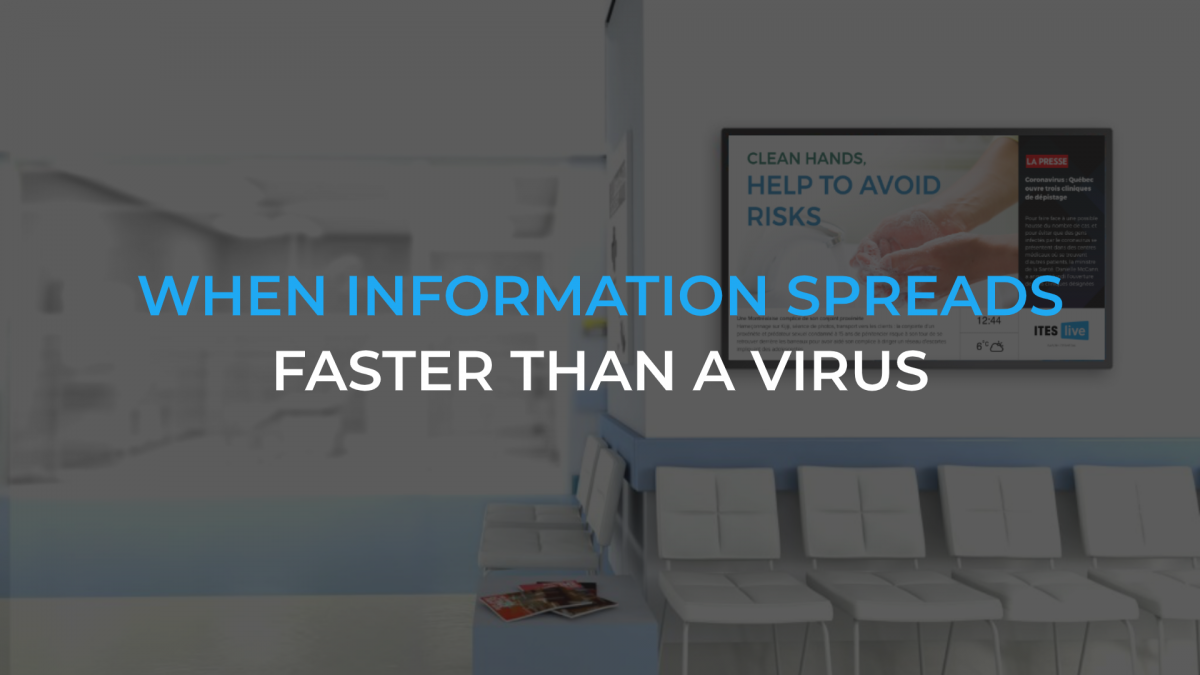To make your employees feel happy at work, it is important that you have flexible and efficient communication tools. Many managers have had the unfortunate experience of sending an important email to all of their employees, only to later find out that only a minority of them have actually read it. Ensuring efficient internal communications can be challenging, especially when the organization has more than one site. Internal communication tools such as digital signage improve the efficiency of communications and facilitate content management, no matter the number of screens or their location.
1. Improve employee engagement
Keeping employees engaged is a priority: it makes them happy at work and helps employee retention. Employee engagement is actually one of the most important challenges for companies: in 2019, only 35% of employees in the US said they felt engaged, and 40% were considering leaving their job before the end of the year. Furthermore, your employees’ engagement and well-being are key factors of their performance. To motivate your employees, show them that they matter to you by sharing more informal content (such as the picture of staff member who has gone above and beyond during the month) and by celebrating their birthday and their achievements on your digital displays. You can also share contests, quizzes or games to make them smile and create communication opportunities.
2. Showcase messages from management and from human resources
Human resources strive to offer a better work environment to employees. This department shares administrative messages through mass emails every time a change is implemented. Consequently, employees end up with a large number of emails every day, and most of the time company emails are the last ones being read – when they are not simply ignored. Instead, share this information directly on digital displays to ensure all employees see your messages.
3. Real-time production data
Most companies have databases that provide various performance indicators in real time. Sharing this production data with your employees could be useful as it would help them check at a glance whether they are on track for company goals. Some employees will feel motivated to see the progression of their work; as for managers, they can leverage this data to see areas that are understaffed, which will in turn help them to adapt accordingly and achieve their objectives. A digital display network can also be used to share these indicators automatically throughout the company.
4. Provide training and safety information
Digital signage can also be used to share safety guidelines and warnings during emergencies. Posting reminders about safety instructions helps reduce the number of accidents that can happen every day at the workplace.
Employees usually enjoy training sessions, but if they do not use the company intranet, they will miss upcoming opportunities. Displaying training information on your screens will increase their visibility, and employees will remember more easily that they can attend development workshops and training sessions (about new equipment, for example).
Digital signage helps you share different kinds of content adapted to your sector and your needs and makes your messages visible to a larger audience. Take advantage of our 30-day free trial to experience our software and our templates to make your communications stand out.


